Choosing a trailer for a mini-tractor
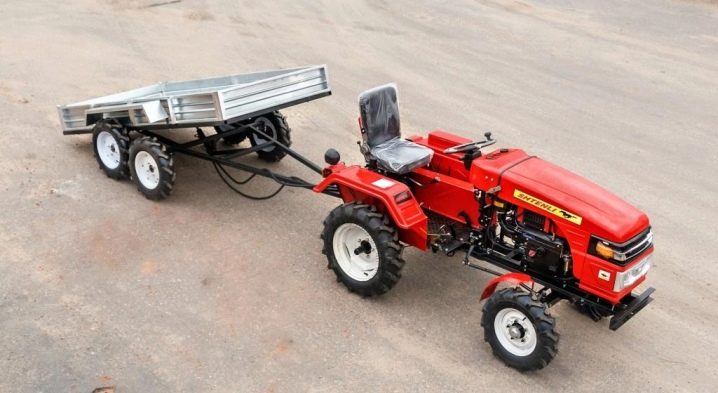
Agricultural machinery greatly facilitates the hard work of farmers and summer residents. A mini tractor is a good choice for owners of medium sized plots. To expand the capabilities of this "workhorse" and use it to transport various goods, it is worth considering the nuances of choosing a trailer for a mini-tractor.
Peculiarities
Structurally, trailers for mini-tractors differ little from automobile trailers, except that their maneuverability and maneuverability are usually higher. Most often, they are attached to the transport on a towbar, although there are other varieties that are most often designed for specific models of agricultural machinery.
They are often used for transporting bulk cargo (earth, fertilizers, sand and building materials), as well as for transporting crops. Most of the models are designed for mini-tractors of medium and high power (from 6 HP).
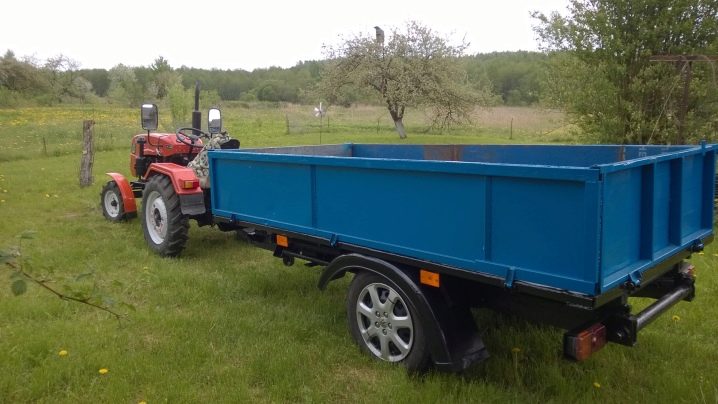
Varieties
By the number of axles, trailers are:
- uniaxial - the simplest, most maneuverable, lightweight and cheapest, but require balancing of the load and usually do not have a high carrying capacity;
- biaxial - the load in their body is evenly distributed, they are much more stable than single-axle ones, and have better carrying capacity (up to two tons);
- triaxial - the most expensive and least common models, designed for use with tractors of high power (from 16 HP) for the transportation of heavy loads.
For cross-country driving, multi-axle options are much better than single-axle options.
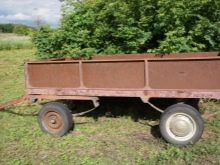

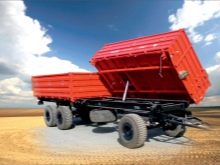
According to the principle of unloading, trailed equipment is usually divided into two types.
- Onboard - unloading is carried out manually by folding the side or rear boards. These trailers are best suited for transporting relatively large and packed loads such as containers or crates of vegetables and fruits.
- Tipper - these trailers are equipped with a body tilting device. They are best used for transporting bulk building materials, soil, fertilizers, garbage and crops in bulk.
A rare and highly specialized version of trailers - barrel... In fact, it is a barrel on wheels familiar to many kvass lovers, which is usually used to transport agricultural liquids (water for irrigation and fertilizers).
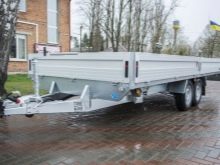
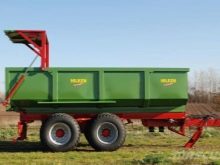
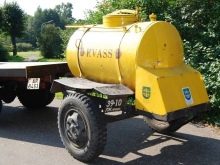
Popular models
One of the most popular single-axle trailers - PU-3,0-01, characterized by a maximum load of 3 tons with a dead weight of 630 kg. It is equipped with a pneumatic or hydraulic body tipping system, which allows it to tilt up to 50 degrees.
Another popular relatively inexpensive and lightweight model - PTO-1500 with hydraulic tipper system. With a mass of 400 kg, it can transport up to one and a half tons of various cargo.


If you are interested in an airborne option, it is worth considering model 7CM-1.5 with a lifting capacity of up to 1.5 tons.
Popular among biaxial options PPTS-2 lifting capacity up to 2 tons with hydraulic cylinder.
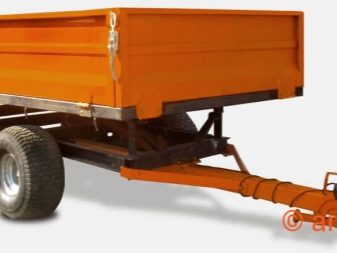
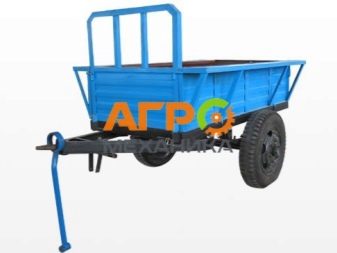
Selection Tips
Before placing an order, you should carefully study all the available offers in various online and offline stores. Often on different sites, prices differ noticeably even for the same model. Well, prices between models from different manufacturers with similar functionality can differ even by 10 times.
In addition to the price, the following factors must be taken into account:
- the number of axles (for large farms, biaxial options are best suited, while for summer residents the option with one axle will be enough);
- reliability and durability (buying a cheap and unreliable model, you may face its very quick breakdown);
- mounting system (does it fit your mini-tractor);
- weight and carrying capacity (whether your existing tractor can handle the transportation of goods on this trailer);
- body dimensions (if you plan to transport not only bulk cargo, but also larger objects, it is worthwhile to estimate in advance whether they will fit into the trailer);
- the presence of the dump truck function and the peculiarities of its implementation (does the power of the lifting equipment correspond to the maximum carrying capacity).

Making yourself
If none of the models popular on the market suits your needs, or you want to save on retail markups, then any type of trailer can be made by hand. To do this, you will need the appropriate materials, a welding machine, a set of locksmith tools and a certain level of master's skills.
The easiest way is to make a uniaxial model yourself. To do this, you can use ready-made sets of drawings, or you can design the product yourself.
Consider the basic rules that should be followed when making a trailer.
- First of all, you need to make a supporting frame of the structure and weld a reinforcing crossbar to it. Use pipes made of durable material for these elements.
It is advisable not to use materials that have already been used in other structures for elements that will work under load.
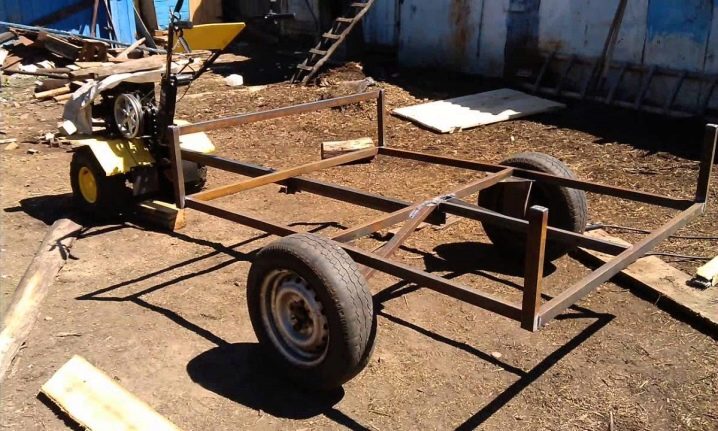
- The sides and bottom are best made of wood or durable, but light grades of steel or other metals. Remember that for a higher carrying capacity of a trailer, its own weight should be minimal, but in no case at the expense of strength.
The best options for these elements are sheet steel or aluminum. Wooden trailers are noticeably lighter and cheaper than metal ones, but they tolerate work and storage at high humidity much worse.
- When choosing wheels, consider options designed for walk-behind tractors. Their diameter is the most appropriate for the required one, moreover, they are designed for exactly those operating conditions that you need. If possible, purchase wheels with reinforced tread - they have noticeably better cross-country ability, and they are also much more puncture resistant.
- The finished product must be painted. In this case, it is advisable to give preference to light colors so that the trailer does not heat up in the sun. Use the correct paint type for each material to avoid peeling and cracking.
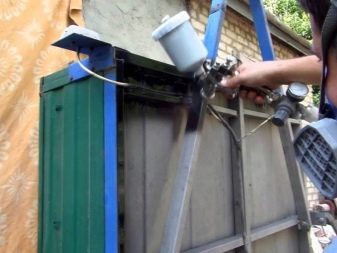
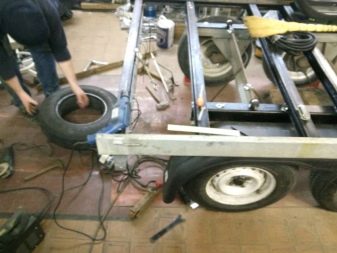
Biaxial units are created according to the same principles, but you need to pay special attention to the fact that the load is evenly distributed on both of its axles.
If you want to create a version with a tipping cart, then the easiest way is to make structures with an L-shaped pin, where the body will lower under its own weight. More sophisticated options can be realized with a hydraulic cylinder, winch, jack, electric motor, or even a pump.
Before proceeding with the operation of the finished homemade product, it will be necessary to conduct a series of serious tests in order to exclude the loss of valuable cargo or injury to the operator.
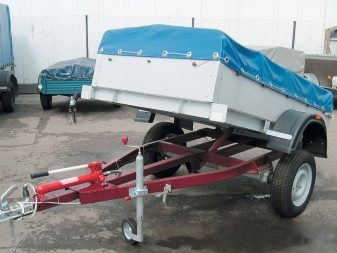

Operating tips
Pay close attention to the technical condition of the trailer, especially the integrity of its supporting frame.
In dumping options, it is worth especially carefully monitoring the state of the tipping system, otherwise it can fail at the most inopportune moment, and at best you will have to manually unload the load.
Never overload the trailer above the rated capacity.In addition, many farmers advise not to load units with a declared carrying capacity of 2 tons by more than 1.5 tons.
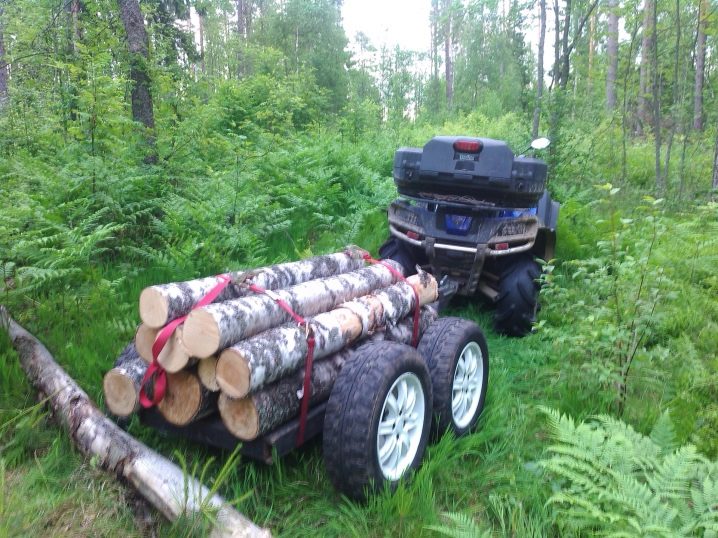
You will learn how to make a trailer for a mini-tractor on your own from the following video.



































































The comment was sent successfully.